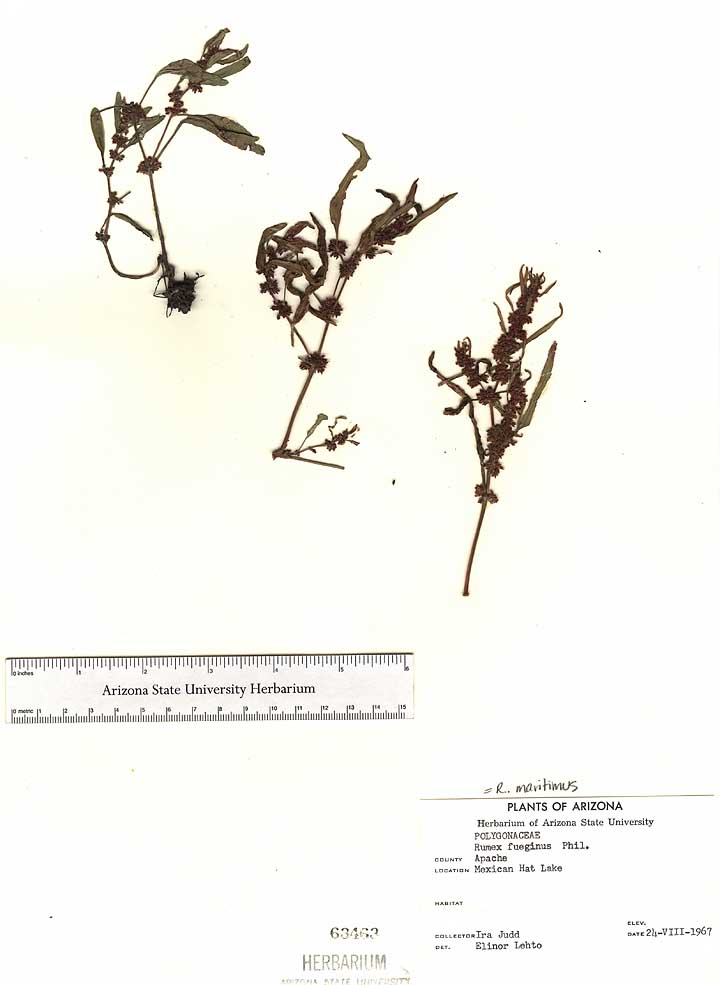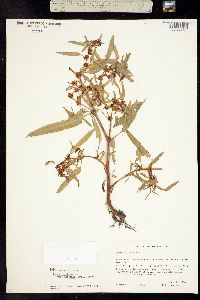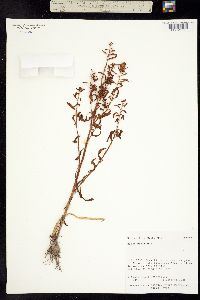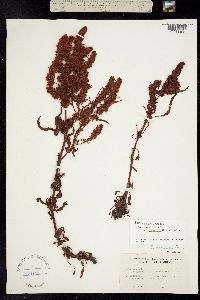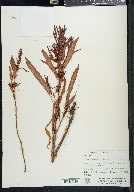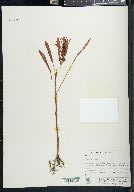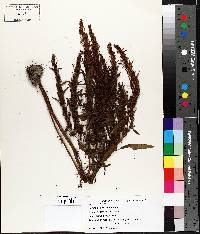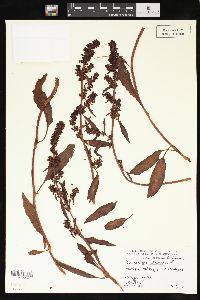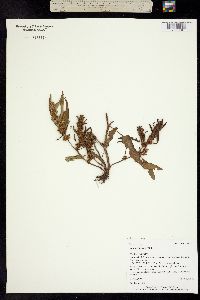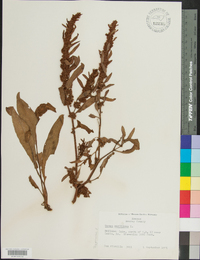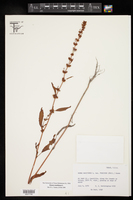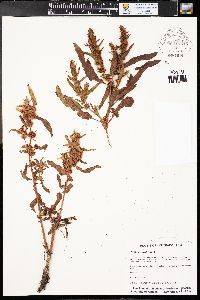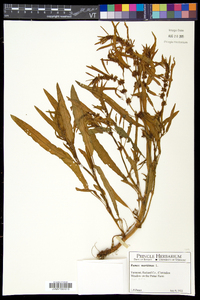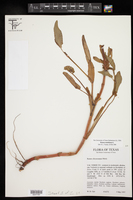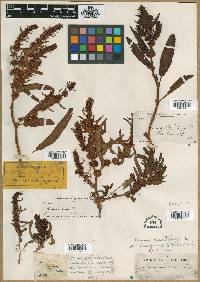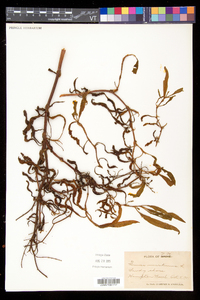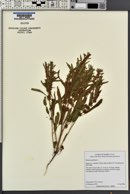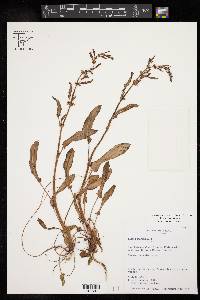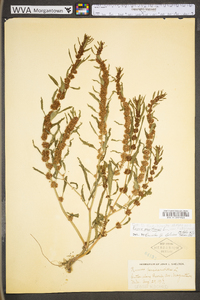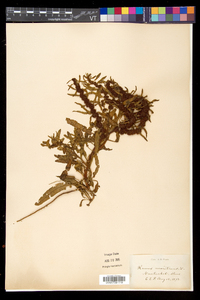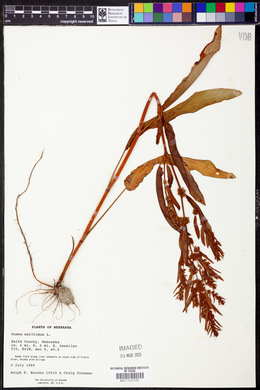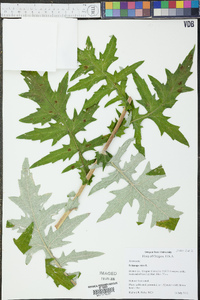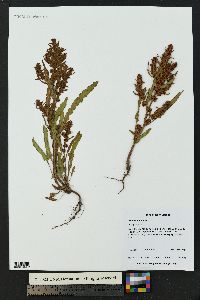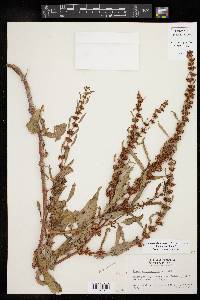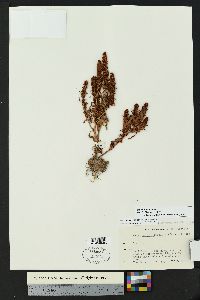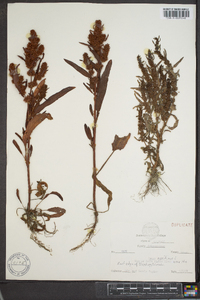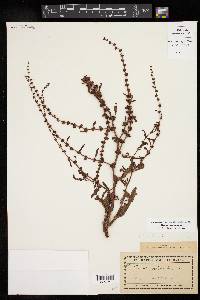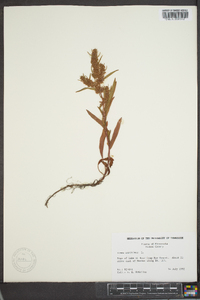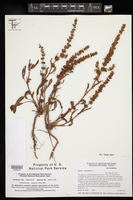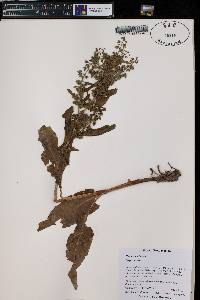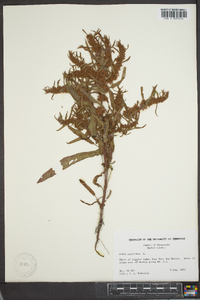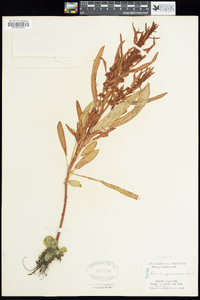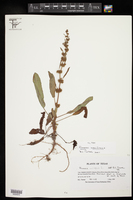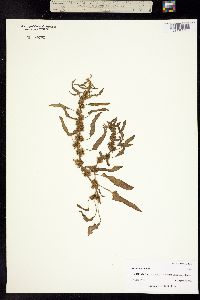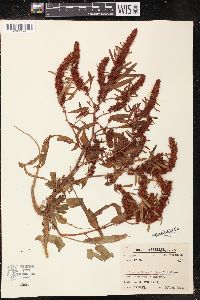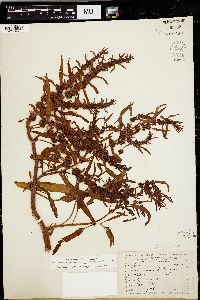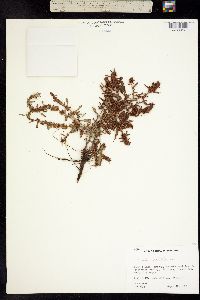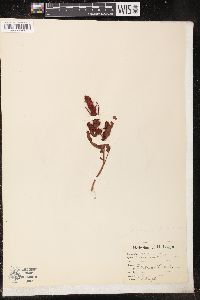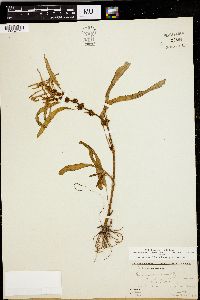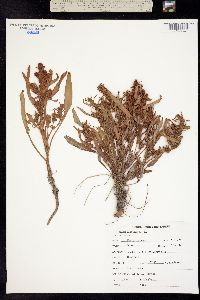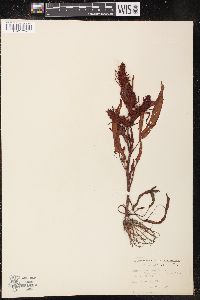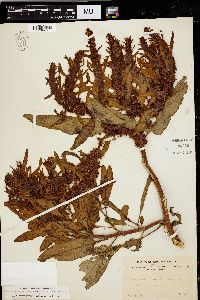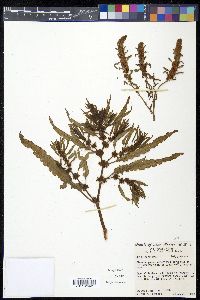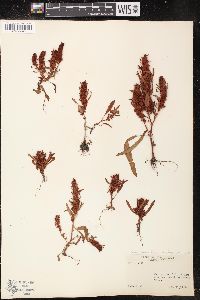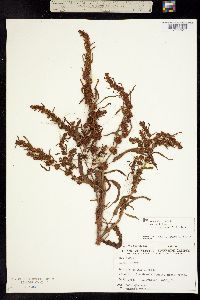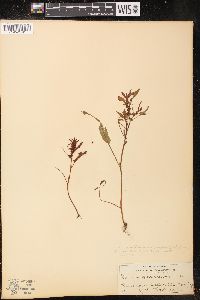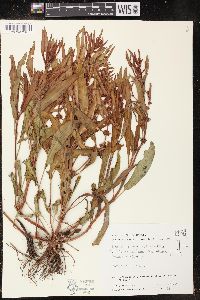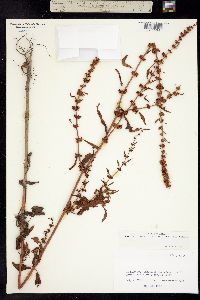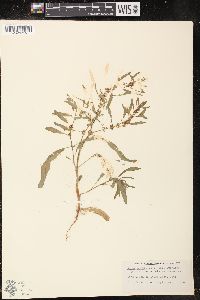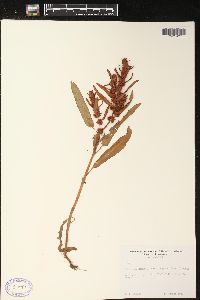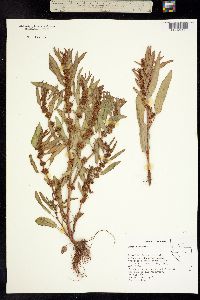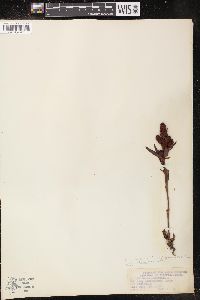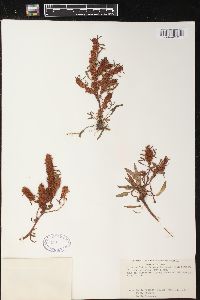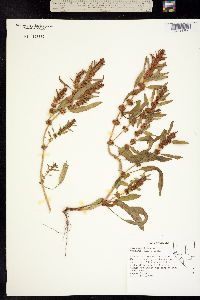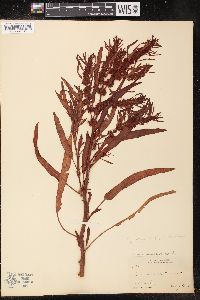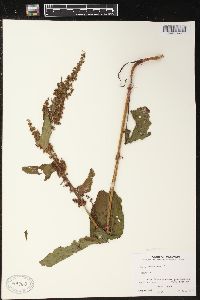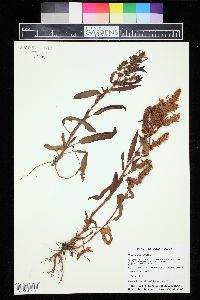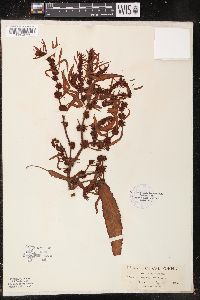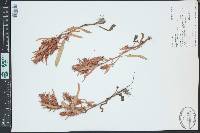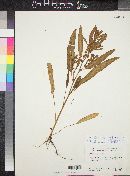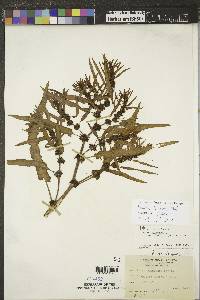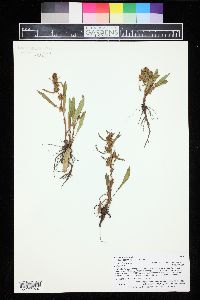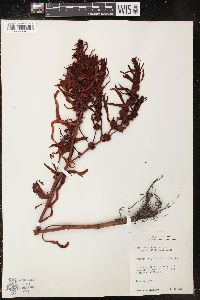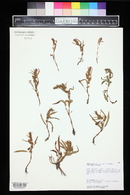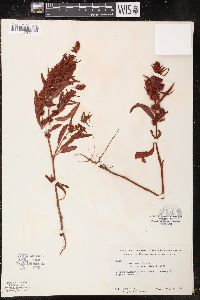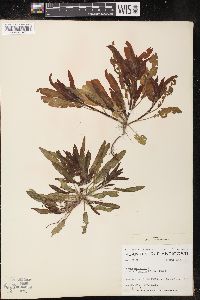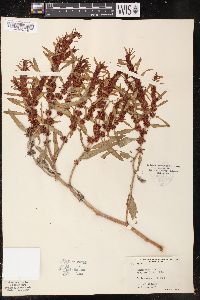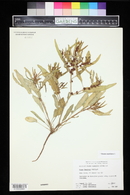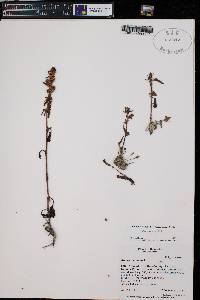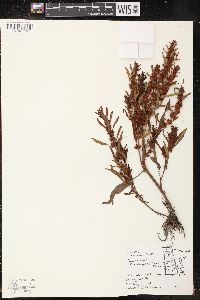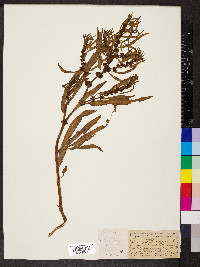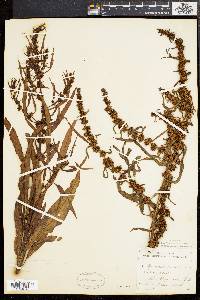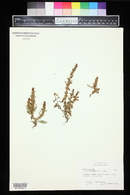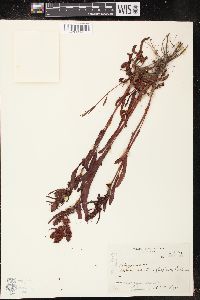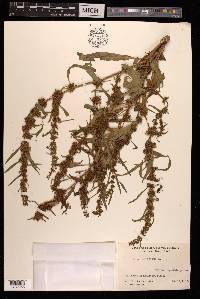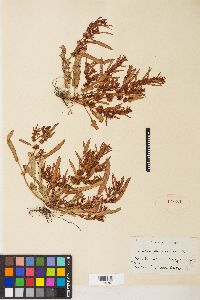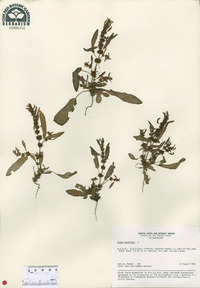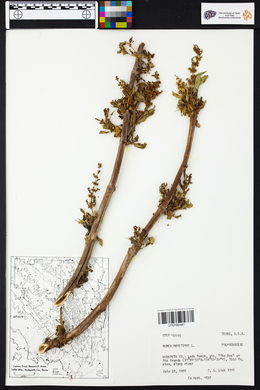Rumex maritimus
|
|
|
|
Family: Polygonaceae
Golden Dock, more...bristle dock
[Rumex maritimus var. athrix St. John, moreRumex maritimus var. persicarioides (L.) R.S. Mitchell] |
Plants annual, rarely biennial [perennial], glabrous or very weakly short-papillose, mostly in inflorescence and on leaf blades, with fusiform, vertical rootstock. Stems erect (some dwarf alluvial forms may be ascending or almost prostrate), branched in distal 3, occasionally almost near base, (5-)15-75(-100) cm. Leaves: ocrea deciduous to partially persistent at maturity; blade lanceolate or lanceolate-linear, rarely oblong-lanceolate, usually very gradually narrowed at both ends, (4-)7-25(-40) × (1-)1.5-4(-5) cm, at least 4 times as long as wide, base narrowly cuneate, very rarely broadly cuneate, margins entire, flat or rarely weakly undulate, apex acute, very rarely subobtuse. Inflorescences terminal, occupying distal 1/ 2 of stem, occasionally most of stem, golden or greenish yellow, usually rather dense or interrupted in proximal part, broadly paniculate, branches spreading. Pedicels articulated near base or at least in proximal 1/ 3, filiform, 3-8 mm, articulation weakly evident. Flowers 15-30 (occasionally more) in rather dense whorls; inner tepals narrowly triangular or narrowly rhombic-triangular, 2.5-3(-3.5) × 0.75-1.2(-1.5) mm (excluding teeth), normally ca. 2 times as long as wide, base truncate or broadly cuneate, margins prominently dentate, apex acute, very rarely subacute, straight, teeth 2-3(-4), normally at each side of margins, subulate-filiform, bristlelike, 1-3.5 mm, usually 1.5-2 times as long as width of inner tepals; tubercles 3, equal or subequal, apex acute or subacute, smooth. Achenes light brown, small, 0.9-1.75 × 0.6-1 mm. 2n = 40. Flowering summer-early fall. Alluvial, riparian, and coastal habitats, mostly as a ruderal species; 0-500 m; introduced; Yukon; Alaska, Mass., N.J.; Europe. This Eurasian species is known as a casual alien from several localities in North America. Its distribution is poorly known due to confusion with native American species of this aggregate. Plants from Alaska and Yukon reported by E. Hultén (1968) as Rumex maritimus need additional study; they may be conspecific with some eastern Asian races of the R. maritimus aggregate. It is rare or almost absent in eastern Asia, where it is replaced by closely related taxa. Species of the Rumex maritimus aggregate can be placed in a separate subsection Maritimi Rechinger f. (K. H. Rechinger 1937) or even section Orientales A. I. Baranov & B. V. Skvortzov (see A. E. Borodina 1977). In addition to characters mentioned in the key and descriptions, additional distinctive features of Rumex maritimus are the smooth tubercles (occasionally finely striate or indistinctly pitted in herbarium specimens), and golden yellow or greenish yellow mature inflorescences.
Fibrous-rooted, hollow-stemmed annual to 8 dm, often bushy-branched; lvs narrowly lanceolate to oblong-linear, the larger commonly truncate to subcordate at base, the margins often crisped; panicle large and freely branched, many of the verticils subtended by small lvs; pedicels jointed near the base, twice as long as the fr; valves triangular-ovate, 2-3 mm, with 2 or 3 divergent marginal bristles on each side, the free tip triangular; grains 3; 2n=40. Shores, streambanks, and wet ground, avoiding acid soils; widespread in Eurasia, and irregularly in N. and S. Amer. Typical R. maritimus is European. We have 2 vars. Var. fueginus (Phil.) Dusꮬ widespread in both N. and S. Amer., has narrowly lanceolate grains, 0.3-0.4 mm wide and tapering to the summit, and the valves have relatively long marginal bristles, to ca 2.5 mm. Var. persicarioides (L.) R. S. Mitch., occurring in coastal marsh areas from L.I. and Mass. to Que., and from n. Calif. to B.C., has broader, ellipsoid grains, 0.4-0.6 mm wide and rounded to the summit, nearly concealing the body of the valve, which has shorter marginal bristles, 0.5-1.5 mm. (R. persicarioides, but the name often misapplied to var. fueginus) Gleason, Henry A. & Cronquist, Arthur J. 1991. Manual of vascular plants of northeastern United States and adjacent Canada. lxxv + 910 pp. ©The New York Botanical Garden. All rights reserved. Used by permission. |

